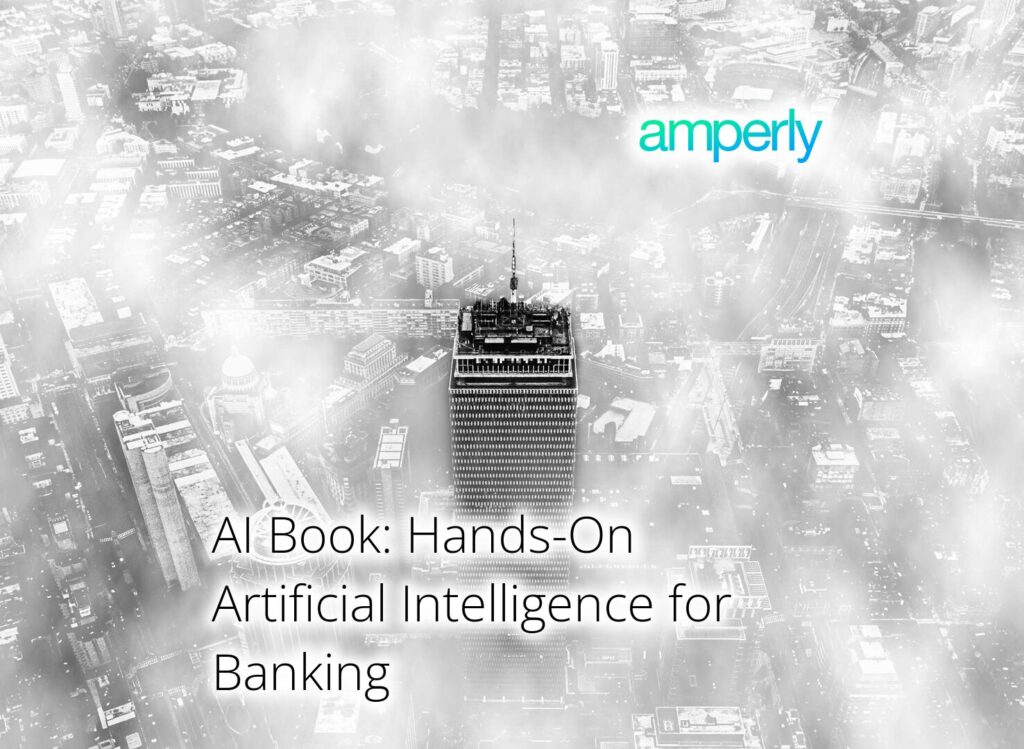Machine learning in banking is transforming the way you work, driving efficiency across customer support, fraud detection, and beyond. From automating routine back-office tasks to enhancing cybersecurity in real-time, AI isn’t just a tech trend—it’s the tool reshaping your daily operations. Ready to see how LLMs and generative AI can make a tangible difference in your role? Let’s dive in.

You can learn more about optimizing banking customer service with AI through this article AI in banking customer service. You’ll find valuable insights on how machine learning is used in fraud detection here AI in fraud detection.
LLMs Transforming Customer Support in Banking
AI Fraud detection: Machine learning in banking is transforming fraud prevention strategies by identifying anomalies in real time. For example, Danske Bank reduced false positives by 60% and increased fraud detection by 50% after implementing machine learning-based systems. You can use this technology to significantly lower fraud-related losses and build customer trust through faster, more accurate security measures.
AI Customer support in banking: Machine learning in banking industry applications, such as AI chatbots, are revolutionizing customer interactions. Bank of America’s Erica chatbot has handled nearly 1 billion customer interactions, answering over 1 million unique queries efficiently since 2018. Consider adopting or improving such solutions to meet rising client expectations for 24/7 support while reducing staffing costs.
Fraud Detection with Machine Learning Models in Banking Operations
Fraud detection and prevention with machine learning in banking: Fraud detection has always been a cornerstone of secure banking operations. With machine learning in banking, fraud detection rates have improved by up to 50%, as seen in Danske Bank’s adoption of advanced models to reduce false positives by 60% and better identify fraudulent activities in real-time. By analyzing massive transaction datasets, machine learning adapts to emerging fraud tactics, offering dynamic and effective solutions that protect customer trust and assets. Start small by assessing current fraud detection processes—what’s working, what isn’t—and work toward implementing ML-based systems to strengthen those weak areas.
Enhanced customer experiences powered by machine learning and banking data: Machine learning personalization tools transform how banks interact with customers. For example, 78% of banking customers expect personalized support, and machine learning in banking industry applications like Wells Fargo’s Customer Engagement Engine enable tailored recommendations that meet individual needs in real time. You can leverage historical transaction data and spending patterns to predict customer preferences, helping your bank build deeper relationships while driving cross-selling opportunities. What’s one area where your team could start offering smarter, more personalized experiences today?
Personalized Financial Services Through Generative AI
Fraud Detection Redefined: Machine learning in banking transforms fraud detection into a proactive, data-driven process. For example, Danske Bank reduced false fraud alerts by 60% and increased fraud detection by 50% with machine learning-based models, showcasing its potential to enhance accuracy and efficiency in real-time operations. By implementing these systems, you can identify hidden patterns and anomalies, protecting customers and minimizing financial losses.
Personalized Financial Services: Machine learning and banking come together to deliver deeply customized experiences to your clients. A J.D. Power study shows 78% of banking consumers demand personalized support from their banks, emphasizing the urgency to embrace machine learning tools for customer segmentation and product recommendations. By leveraging machine learning in banking, you can meet customer expectations and foster stronger, more loyal relationships.
Risk Management Enhanced by Generative AI Simulations
Improved Risk Management with Machine Learning in Banking: Machine learning in banking gives you sharper tools to analyze massive amounts of financial and transaction data for improved decision-making. For example, McKinsey estimates that generative AI can add $200 billion to $340 billion annually across banking and retail industries. By using predictive analytics and real-time monitoring, you can identify risks faster and take preemptive action to safeguard your assets while reducing uncertainty in planning.
Fraud Detection Transformed by Machine Learning in Banking: Fraud detection becomes both faster and smarter with machine learning in banking. Danske Bank, for instance, reduced false positives by 60% and increased fraud detection rates by 50% using machine learning models. This technology equips you to analyze thousands of data points in real time, find hidden fraud patterns, and strengthen trust with your clients by safeguarding their accounts.
Automating Back-Office Banking Functions with LLMs
Fraud Detection and Prevention: Machine learning in banking has made fraud detection faster and more accurate, adapting to new fraud tactics in real time. For example, after adopting an ML-based system, Danske Bank improved its fraud detection rate by 50% and cut false positives by 60%, drastically reducing manual review costs. By automating fraud detection, you can identify suspicious activities more effectively while focusing resources on significant threats.
Document Digitization and Efficiency: Machine learning in banking industry operations like document processing reduces costs and improves workflow accuracy. A US bank using ML and OCR processed 35 million pages of mortgage documents, increasing classification accuracy by 87% while cutting operational costs by 50%. Automating tasks like these lets you save time and focus on value-driven work, such as enhancing customer service.
Driving Credit Scoring Efficiency via AI and Machine Learning
Driving Credit Scoring Efficiency with Machine Learning in Banking: Machine learning in banking enables lenders like you to assess borrower risk more accurately by analyzing both traditional and unconventional data sources, such as telecom usage and utility bills. For instance, 5Point Credit Union implemented a machine learning credit scoring model that now generates an additional $1.5 million in profit annually. By adopting these models, you can extend outreach to underserved groups while reducing default risks—helping both the bank and its customers.
Optimizing Fraud Detection with Machine Learning in Banking: Machine learning and banking fraud detection go hand in hand, offering adaptive solutions to combat evolving fraud tactics. At Danske Bank, a shift to machine learning fraud models cut false positives by 60% and increased actual fraud detection by 50%, showing its immediate operational impact. As a bank employee, using such models means quicker fraud detection, fewer disruptions, and building stronger trust with your customers.
Cybersecurity Improvements Using Generative AI in Banking Systems
Improving Fraud Detection in Banking: Machine learning in banking allows systems to adapt quickly to evolving fraud tactics almost in real time, making it more reliable than traditional rule-based systems. For example, Danske Bank reduced false positives by 60% and raised fraud detection rates by 50% through machine learning algorithms, improving both efficiency and accuracy. If fraud detection is part of your responsibilities, consider pairing ML models with your current processes to improve security while managing false alerts.
Enhancing Customer Personalization with Machine Learning: Machine learning in banking enables institutions to understand customer behavior more deeply, creating highly personalized experiences. A J.D. Power survey revealed that 78% of banking customers expect personalized financial support, highlighting the role ML plays in meeting customer needs. Start by identifying areas like budgeting tools or personalized product recommendations that can directly benefit your customers while making their financial decisions easier.
RegTech and Anti-Money Laundering Compliance with AI
Fraud detection powered by machine learning in banking: Staying ahead of fraudsters is a constant uphill battle, and rule-based systems often fall short. Danske Bank saw a 60% reduction in false positives and a 50% increase in fraud detection after shifting to machine learning models, showing just how effective these tools are when trained on vast datasets. By analyzing transactional patterns almost in real-time, machine learning adapts to evolving fraud tactics quicker than traditional systems, building trust with your customers while safeguarding their assets.
Improved personalization through machine learning and banking efficiencies: Customers expect their bank to understand their needs without being intrusive, and machine learning makes this possible by analyzing behaviors and preferences. TransUnion, for example, uses Mint, an ML-based budgeting app, to help users improve credit scores while driving loyalty and higher lifetime value. Personalized solutions in banking don’t just meet expectations—they cultivate stronger relationships and keep customers coming back.
Transparency and Explainability in Banking AI using XAI
Fraud Detection with Machine Learning in Banking: Fraud detection is essential to securing your bank’s assets and reputation. According to PwC’s Global Economic Crime and Fraud Survey 2022, 46% of organizations experienced economic crimes within 24 months, underlining the urgent need for smarter fraud prevention strategies. Machine learning in banking’s fraud detection systems help reduce false positives, as seen with Danske Bank, which cut them by 60% while increasing fraud detection by 50%, demonstrating the immense impact on operational efficiency and trust.
Hyper-Personalization Through Machine Learning in Banking: Personalization improves customer retention and increases revenue. A J.D. Power study found 78% of banking customers expect personalized recommendations, and tools like machine learning-powered apps can deliver on those expectations. By using machine learning in banking industry tasks like analyzing spending patterns or creating budgeting tips, banks can meet and exceed customer expectations, fostering loyalty and lifetime value.
Accelerating Financial Product Innovation Through AI Models
Fraud Detection with Machine Learning in Banking: Machine learning in banking has transformed fraud detection by analyzing transaction data in real time and identifying fraudulent patterns. For instance, Danske Bank’s machine learning system reduced false positives by 60% and increased fraud detection by 50% compared to its older rule-based system. By adapting to ever-changing fraud tactics, you can safeguard customer assets and boost institutional trust while minimizing disruptions.
Risk Management through Predictive Analytics: Machine learning in banking enhances risk management by identifying trends and monitoring financial anomalies. Barclays, for example, uses simulation platforms powered by machine learning to assess market risks, helping predict outcomes like ‘default contagion’ across banks. Effective deployment provides real-time insights, enabling you to develop proactive strategies and strengthen financial stability.
Artificial Intelligence Services
Machine Learning in Banking: 3 AI Services to Watch
Machine learning is reshaping banking. From improving customer support to fraud detection, AI is transforming how banks operate. Here are three AI services you should focus on for practical results.
1. Transforming Customer Support with LLMs
Large language models (LLMs) are changing the way banks handle customer service. AI chatbots make 24/7 support possible, solving questions instantly without the need for long queues. This reduces operating costs and improves customer satisfaction. See how to create AI-powered customer communication with custom chatbots and other tools built for banking.
2. Fraud Detection with Machine Learning Models
Fraud detection systems powered by machine learning analyze transaction patterns in real time to flag irregularities. These systems adapt quickly to new tactics, minimizing false alerts and saving millions in fraud prevention each year. Learn how AI services help craft fraud detection tools that reduce risks for customers and banks alike.
3. Personalized Financial Services Through Generative AI
With generative AI, banks deliver smarter and more targeted financial advice. These models customize recommendations based on spending habits, income levels, and personal preferences. This data-driven approach deepens customer relationships while enhancing loyalty. Explore how artificial intelligence consulting services can add personalization to your banking products.
AI has redefined the way banks operate. Want to see what it can do for your business? Dive into our AI services for more inspiration. You can discover more about the power of AI in fraud detection by checking out this article on artificial intelligence in fraud detection.
Take Action Today: Simple Steps to Implement Machine Learning in Banking
Here’s what you should do now to get started: First, identify one area where machine learning in banking can improve current processes, whether it’s fraud detection, customer personalization, or risk management. Pinpoint the gaps—what’s slowing you down or where inefficiencies are costing your team time or resources. Second, start small by researching tools or vendors that specialize in implementing ML systems tailored to your needs. A pilot project is often the simplest way to demonstrate measurable ROI.
If you’re unsure where to begin or want expert guidance, reach out to us. We’re here to help you move from ideas to action.

